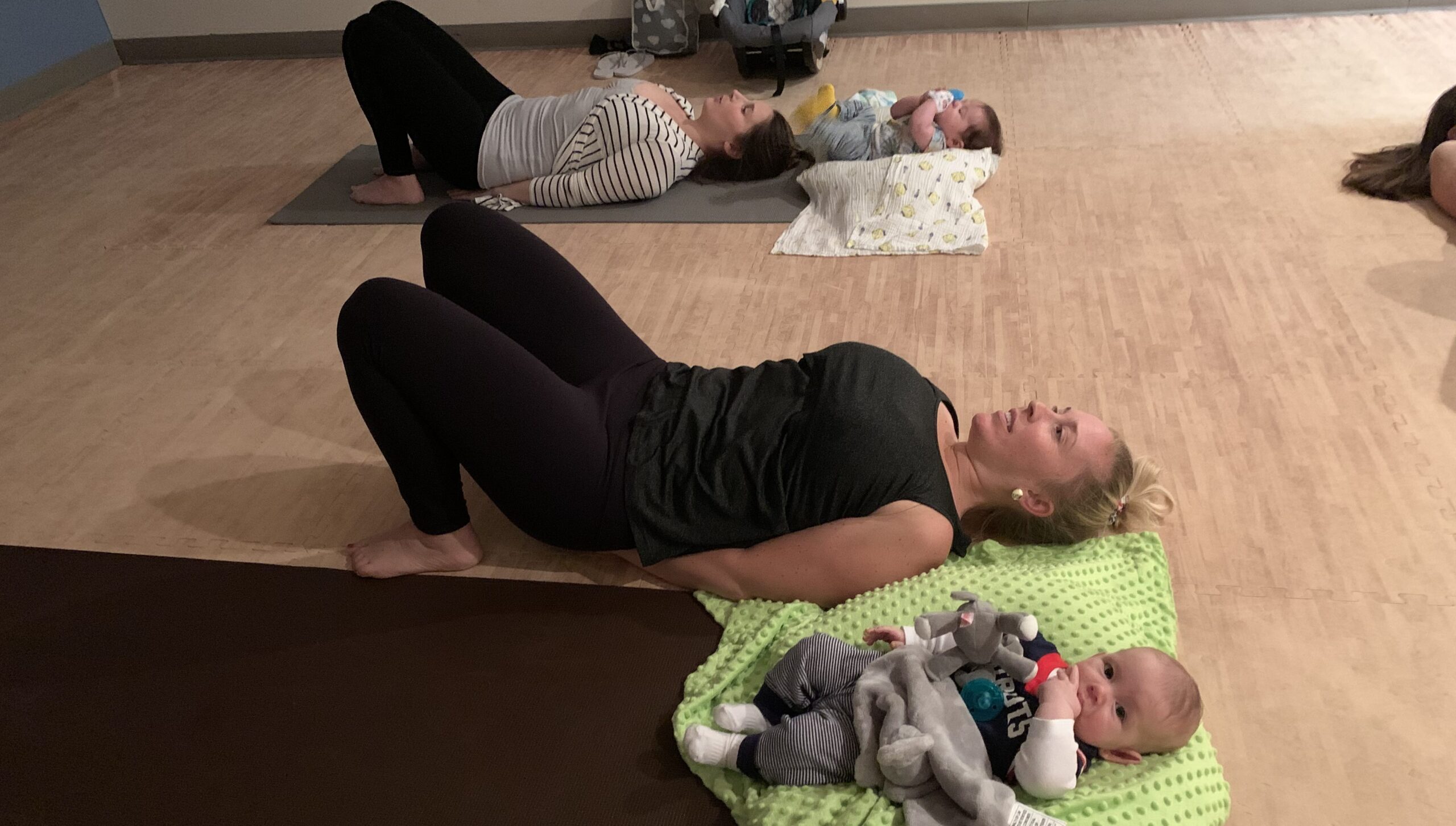

Lunge (R) – walk both hands to either side of your right foot turn your toes down bringing your hips parallel to the floor. Runners squat switch to other side * – bring both hands inside left knee and turn your right toes up and heel down, walk your hands over to your right as you bend your right leg and straighten your left leg with toes pointing up, heel down. Lunge (L) – bring both hands down to either side of your left foot and turn your back heel up to bring both your hips parallell to the floor. Side Angle Pose (L) * – bend your right knee and bring your knee over your ankle with your elbow on your thigh or hand on the floor, extended your right arm straight over your ear, palm facing the floor. Triangle (L) – turn your left toes to the left and bring your left hand to your shin or the floor, extend your right arm toward the ceiling. Star pose – shift your weight into yoru toes to turn your heels out and bring your feet to parallel as you straighten your legs and extend your arms out to your sides. Goddess – step your left foot out to the left, turn both toes toward the corners of your mat, and bend your knees, keeping your knees pointing in the same direction as your toes, bend your elbows and point your fingers toward the ceiling. Side bend (both directions) – lift your arms overhead, palms together, crescent to one side and then the other.  Mountain pose – stand with your feet parallel under your hips, arms at your sides or palms together. This moon saltuation is a variation of a sequence created by a group of senior female teachers at the Kripalu Center in the late 1980s which Jen found in a no-longer-posted graphic by Laura Cornell.Īfter a basic warm up, turn to face the long side of your yoga mat to practice the following sequence: For years, Jen taught twice weekly early morning practices and offered moon salutations whenever full-moons coincided with class. Most other yoga traditions do not forbid practice, but many adjust their sequences to honor the need for more grounding during heady full-moon days and go with it on already-grounding new moons. Apana is a contracting, downward moving force that makes us feel calm and grounded, but dense and disinclined towards physical exertion. The new moon energy corresponds to the end of exhalation when the force of apana is greatest.
Mountain pose – stand with your feet parallel under your hips, arms at your sides or palms together. This moon saltuation is a variation of a sequence created by a group of senior female teachers at the Kripalu Center in the late 1980s which Jen found in a no-longer-posted graphic by Laura Cornell.Īfter a basic warm up, turn to face the long side of your yoga mat to practice the following sequence: For years, Jen taught twice weekly early morning practices and offered moon salutations whenever full-moons coincided with class. Most other yoga traditions do not forbid practice, but many adjust their sequences to honor the need for more grounding during heady full-moon days and go with it on already-grounding new moons. Apana is a contracting, downward moving force that makes us feel calm and grounded, but dense and disinclined towards physical exertion. The new moon energy corresponds to the end of exhalation when the force of apana is greatest. #New moon yoga sequence full#
During the full moon we tend to be more headstrong. The Upanishads state that the main prana lives in the head. This is an expansive, upward moving force that makes us feel energetic and emotional, but not well grounded. The full moon energy corresponds to the end of inhalation when the force of prana is greatest. Their relative positions create different energetic experiences that can be compared to the breath cycle. Both sun and moon exert a gravitational pull on the earth. Full moons occur when they are in opposition and new moons when they are in conjunction. The phases of the moon are determined by the moon’s relative position to the sun. Like all things of a watery nature (human beings are about 70% water), we are affected by the phases of the moon. The Ashtanga Yoga Center of Carlesbad, Ca. In yoga, the energetic effects of the full moon and new moon has significance and, in the Ashtanga tradition, marks days of total rest from practice. The gravitational moon governs our tides, and many believe, our moods.

The full moon has long captured the human imagination and features pominantly in many cultural traditions.







 0 kommentar(er)
0 kommentar(er)
